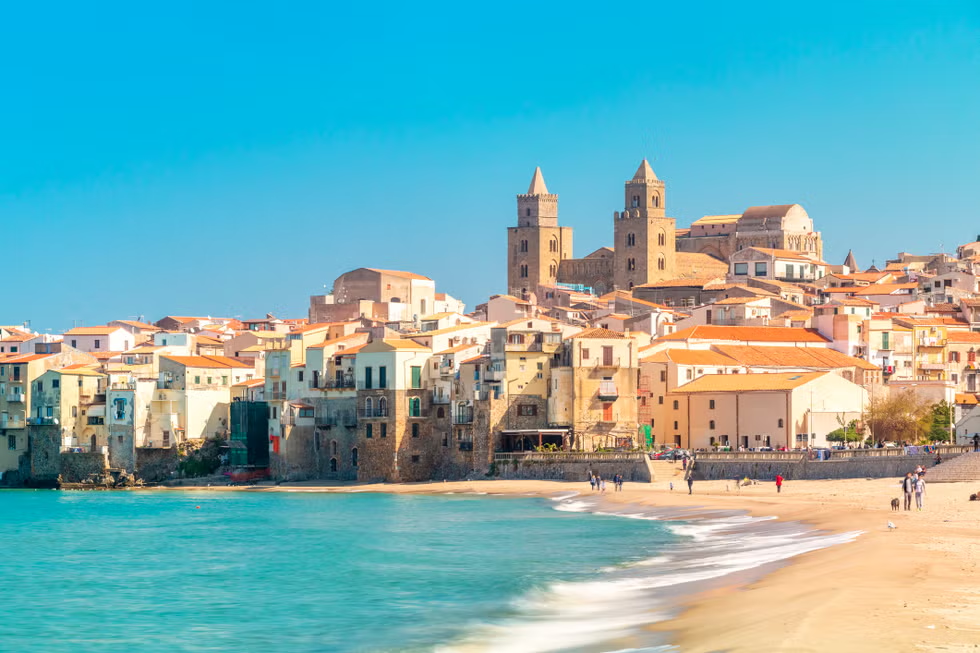When summer unfurls its golden wings across Europe, the continent transforms into a kaleidoscope of radiant coastlines, sun-drenched vineyards, and ancient cities humming with life. But beyond the usual suspects lies a secret atlas of sun-kissed treasures—places where the Mediterranean doesn’t just shine, it sings. Picture lounging on Croatia’s Dalmatian coast, where sapphire waters flirt with limestone cliffs, or tracing the honeyed hills of Portugal’s Alentejo, where time slows under cork trees and ochre skies. Within these areas of Europe, summer is more than just a season—it represents an enchanting period, marked by late sunsets, the harmonious sounds of cicadas, and the inviting warmth of cultures that thrive on celebration. To catch the sun abroad is to chase stories, flavors, and landscapes that glow far beyond the postcard—inviting you not just to visit, but to belong.
Amalfi Coast, Italy 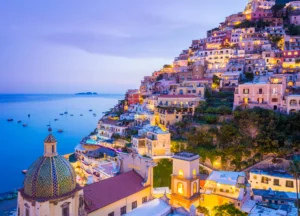
The Amalfi Coast isn’t just a destination—it’s a vertical dreamscape where pastel villages cling impossibly to cliffs, and the sea below shimmers like liquid sapphire spilled from the gods. Here, gravity seems optional and time bends to the slow pulse of lemon-scented breezes and Vespas winding through hairpin turns. It’s where every bite of seafood tastes like a secret passed down through generations, and every sunset feels hand-painted for whoever is lucky enough to be watching. From the hidden coves of Praiano to the cinematic drama of Positano, the coast doesn’t ask for your admiration—it takes it. In Amalfi, beauty isn’t curated; it erupts naturally from land, sea, and soul.
Alternative: Cilento Coast – If you desire a serene retreat that retains the same coastal beauty, the Cilento Coast, situated just south of Amalfi, is worth exploring. You will encounter picturesque, less crowded beaches, quaint towns like Acciaroli, and a more leisurely, authentic way of life. It is an ideal option for enjoying Italy’s coastline free from the throngs of tourists.
Santorini, Greece 
Santorini is less a place and more a symphony of contrasts—where stark whitewashed buildings leap from volcanic cliffs to embrace the infinite blue of the Aegean, and every narrow alleyway whispers stories of ancient eruptions and timeless love. This island is fire and ice in harmonious collision: the smoldering earth beneath your feet giving rise to sunsets so vivid they seem to rewrite the sky’s palette daily. Here, the air carries the faint tang of sea salt and wild herbs, while the taste of volcanic wine lingers on the tongue like a sweet memory. Santorini doesn’t just offer a view; it challenges you to feel the raw power of nature mingled with human artistry, crafting an experience that is at once elemental and ethereal.
Alternative: Naxos – For those desiring a more serene getaway, Naxos is an excellent choice. As the biggest of the Cyclades, it is strikingly less busy. Here, you can enjoy extensive sandy shores, hospitable communities, exquisite Greek dishes, and a relaxed tempo that allows for easy unwinding. It highlights the delights of the Greek islands—while leaving out the unrest.
Barcelona, Spain 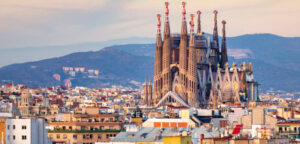
Barcelona is a living mosaic where the pulse of creativity beats in every cobblestone and shadow, a city that dances effortlessly between centuries-old Gothic spires and the wild, whimsical curves of Gaudí’s imagination. It’s a place where the Mediterranean breeze carries the scent of roasting chestnuts and fresh paint, where streets hum with the chatter of artists, philosophers, and flamenco rhythms spilling from hidden tapas bars. Here, the ordinary twists into the extraordinary—markets overflow with colors that rival the stained glass of the Sagrada Família, and sunsets bleed through the skyline like a painter’s final flourish. Barcelona doesn’t just invite you to see it; it dares you to lose yourself in its paradoxes, to live inside a masterpiece that’s forever unfinished, always alive.
Alternative: Valencia – Looking for a similar atmosphere but with more space? Valencia is your destination. Located on the coast, it offers wide beaches, an impressive historical district, and a culinary scene that you will appreciate — this is the home of paella! The city is lively, culturally diverse, and somewhat less busy during the summer months than other seaside spots.
Dubrovnik, Croatia
Like a stronghold, Dubrovnik towers, formed from the deep essence of the Adriatic’s fierce spirit—its weathered walls are a testament to endurance, surrounding a city where the past is distinctly alive in every limestone street and the sea’s salt is stitched into the fabric of daily life. Here, the sun ignites terracotta roofs to a fiery glow while the crystal waters lap against the marble quays, inviting wanderers to trace the footsteps of emperors and pirates alike. This city is a paradox of stillness and storm: tranquil gardens tucked behind battlements clash with the vibrant pulse of bustling markets, and the weight of centuries coexists with the thrill of discovery. The city of Dubrovnik is committed to more than just the preservation of its heritage; it exhibits it as a protective layer, a dynamic story sculpted into the skyline, encouraging the world to explore its spirit of the Adriatic.
Alternative: Šibenik – If you desire a location that is not as busy but just as delightful, Šibenik is worth exploring. This seaside city features remarkable old-world architecture, a reduced tourist presence, and is merely a short journey from the waterfalls of Krka National Park. Coupled with a burgeoning food culture and a tranquil ambiance, it offers a wonderful alternative that still embodies the classic Croatian summer experience.
French Riviera (Côte d’Azur), France 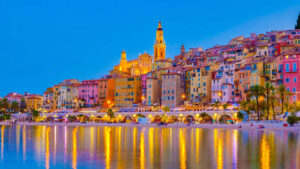
The French Riviera is where the sky and sea conspire in an endless flirtation, casting a spell of glamour woven from sunlight, sea spray, and whispered secrets of old-world aristocrats and new-age dreamers. Here, luxury is not just a lifestyle—it’s a language spoken in the shimmering reflections of yachts moored like jewels against the sapphire backdrop, and in the languid elegance of promenades lined with palm trees that sway to the rhythm of jazz and waves. The Côte d’Azur is a sun-drenched paradox: a playground for the restless and a sanctuary for the soul, where lavender fields and rugged cliffs meet opulent casinos and vibrant art scenes. It’s a place that doesn’t just glow—it radiates an irresistible allure, inviting every traveler to bask in its timeless, sun-kissed enchantment.
Alternative: Cassis – For those desiring a quieter and more relaxed atmosphere, Cassis is an excellent choice. This picturesque fishing village close to Marseille boasts crystal-clear coves referred to as calanques, lovely pastel structures, and a slower rhythm that feels distinctly separate from the lively Riviera. You can still bask in the sunshine and enjoy the seaside splendor — simply with fewer yachts and more freedom to roam.
Interlaken, Switzerland 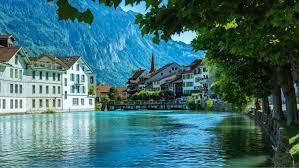
Interlaken is a crystalline heartbeat nestled between twin lakes, where alpine peaks pierce the sky like ancient sentinels guarding a realm of limitless adventure and serene reflection. This is a place where the air tastes of pine and fresh snowmelt, carrying the echo of cowbells and distant waterfalls that compose a natural symphony unique to these Swiss valleys. Here, adrenaline and tranquility collide—paragliders soar above emerald forests while hikers trace hidden trails through meadows blooming with wildflowers untouched by time. Interlaken doesn’t just offer nature; it crystallizes moments of awe into memories that shimmer like the glacial waters below, inviting you to stand at the edge of the world and breathe in the pure essence of the Alps.
Alternative: Lauterbrunnen or Arosa – If you seek a more tranquil getaway, you might want to consider Lauterbrunnen or Arosa. Lauterbrunnen is located in a breathtaking valley adorned with 72 waterfalls and picturesque views in every direction. Arosa, nestled further into the Alps, provides equally stunning landscapes with a reduced number of tourists and a more serene atmosphere. Both destinations are excellent choices for experiencing the enchanting alpine charm without the crowds.
Edinburgh, Scotland
Edinburgh is a city where ancient stones hum with untold stories, perched atop volcanic remnants that have witnessed centuries of fire and fog, rebellion and renaissance. Its skyline—spiked with gothic spires and crowned by a formidable castle—casts shadows that stretch into winding closes and hidden courtyards, where echoes of poets and rebels mingle with the crisp Highland air. This city doesn’t merely hold history; it wears it like a tartan cloak woven from myth and modernity, where every cobblestone pulses with the quiet defiance of a place both weathered and wildly alive. Edinburgh invites you to lose yourself in its labyrinth of time, to sip whisky in dim-lit taverns while the ghosts of the past dance just beyond the flicker of the candlelight.
Alternative: Stirling and Inverness – Should you wish to bypass the festival crowds, Stirling or Inverness may be suitable options. Stirling offers a historical atmosphere reminiscent of Edinburgh, complete with an impressive castle and a quaint old town, but free from the bustling crowds. In contrast, Inverness presents a serene foundation for exploring the Scottish Highlands, characterized by beautiful scenery and a slower summer tempo.
Lisbon, Portugal 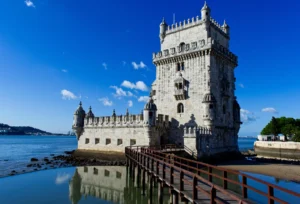
Lisbon unfolds like a weathered fado song—raw, melancholic, and drenched in sunlight—where steep, cobbled streets cascade toward the shimmering Tagus River, carrying the scent of salt, roasted chestnuts, and fresh paint from vibrant murals. This city is a patchwork of contrasts: ancient trams clatter past sleek new cafes, and crumbling azulejo tiles frame facades alive with stories of explorers who once set sail from here to map the world. In Lisbon, time doesn’t march forward; it sways, folding past and present into a dance of light and shadow, where every viewpoint offers a postcard-perfect collision of sky, sea, and cityscape. Here, the soul of Portugal beats strongest—in warm smiles, impassioned music, and the quiet resilience that turns every alleyway into a living poem.
Alternative: Coimbra – If you seek a quieter yet equally cultural experience, make your way to Coimbra. Located by the Mondego River, this university town features medieval architecture, a deep intellectual history, and fewer visitors. It’s an ideal way to enjoy Portuguese charm at a more relaxed tempo.
